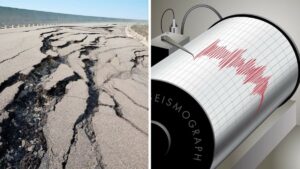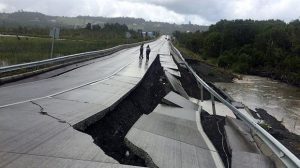A recent study identified a link between the reduction of ice masses and changes in seismic event patterns. This means that climate change can influence earthquakes, as this phenomenon, which affects regions where large water accumulations disappear, generates movements in deep soil structures and alters tectonic activity.
While the effects of climate change have been documented on several occasions in ecosystems, oceans, and ice caps, scientists from Colorado State University discovered a less obvious but crucial connection: its impact on tectonic processes. After analyzing the Sangre de Cristo mountains in Colorado, researchers found that the retreat of glaciers after the last ice age caused a significant increase in tectonic fault activity.
“This study demonstrates that the atmosphere and solid earth are more interconnected than we imagine,” explained Sean Gallen, co-author of the research. These findings provide a new perspective on the interaction between climate changes and tectonic plate movements.
In fact, during the last ice age, the weight of the glaciers stabilized tectonic faults by exerting pressure on the ground. However, the melting of these ice masses drastically reduced this load, allowing an increase in fault activity. According to the study, sliding rates increased up to five times after glacier retreat.

Climate Change and its Relationship with Earthquakes
According to Cece Hurtado, lead author of the study, the speed at which climate change is advancing exceeds what is observed in the geological record and emphasized the urgency of understanding these dynamics. These data demonstrate how stresses accumulated in faults are redistributed due to ice loss, a phenomenon rarely documented with such precision.
For the research, the team used advanced tools such as high-resolution remote sensing and precision GPS to study the relationship between glacier retreat and tectonic activity. They reconstructed the load exerted by ancient glaciers and analyzed sedimentary deposits to determine chronologies of tectonic landslides, establishing solid links between thawing and the acceleration of fault movements.
Although the study focused on Colorado, its conclusions have a global scope. Regions like the Alps, Alaska, and the Himalayas, where glaciers are rapidly retreating in tectonically active areas, could experience an increase in earthquakes. Even in non-glacial areas, the evaporation of large bodies of water could alter stresses in nearby faults and trigger seismic activity.

Rethinking Seismic Cycles
Furthermore, the study challenges the traditional view of regular seismic cycles. This is because researchers found that glacier retreat can concentrate seismic activity in specific periods, generating bursts of earthquakes followed by long intervals of calm. This non-linear behavior highlights the need to integrate climatic factors into seismic risk prediction models.
The findings emphasize the importance of including climatic variables in seismic risk analyses, especially in regions vulnerable to climate change. This approach will allow for the development of more accurate predictive models and the planning of strategies to mitigate risks in communities and infrastructure near active faults.
As global warming progresses, understanding these connections will be essential to anticipate and minimize related geological impacts.

What is the Relationship Between Climate Change and Earthquakes?
The relationship between climate change and earthquakes is complex and still under investigation. However, some factors related to climate change could influence seismic activity, such as:
- The retreat of glaciers, which reduces pressure on the ground and can accelerate the movement of tectonic faults.
- The rise in sea level, which can stress faults and trigger earthquakes.
- Extreme weather conditions, such as heavy rainfall and snowfall, which can increase the risk of earthquakes.
- Winter rebound, which occurs when the weight of water on the earth’s crust improves.
An example of how climate change can influence seismic activity is what happened in Scandinavia 12,000 years ago, when glacier melting caused a rise in the land and triggered numerous earthquakes.
However, there is no definitive study confirming the relationship between climate change and earthquakes.
Do you already know our YouTube channel? Subscribe!

